Innovation Overview
Feb 23, 2024
By Ari Manor , CEO at ZOOZ

This is one in a series of articles that provide detailed and updated information about Innovation.In this specific article, which focuses on Innovation Overview, you can read about:
- What is Innovation? What Does it Mean?
- Does Innovation Mean Change?
- Can Innovation Be Managed?
- Where Innovation Comes From?
- How Innovation Happens?
- Where Innovation Happens? What Leads to it?
- How Does Innovation Work?
- The 4 Types of Innovation
- Which Country is Best in Innovation?
- Why is Innovation Difficult?
- What is the Future of Innovation?
- Business Innovation
- Innovation Skills
- Innovation or Improvement?
- Innovation VS Evolution
- Innovation VS Adaptation
- Innovation for Everyone
For additional articles about Innovation, see the Topic Menu.
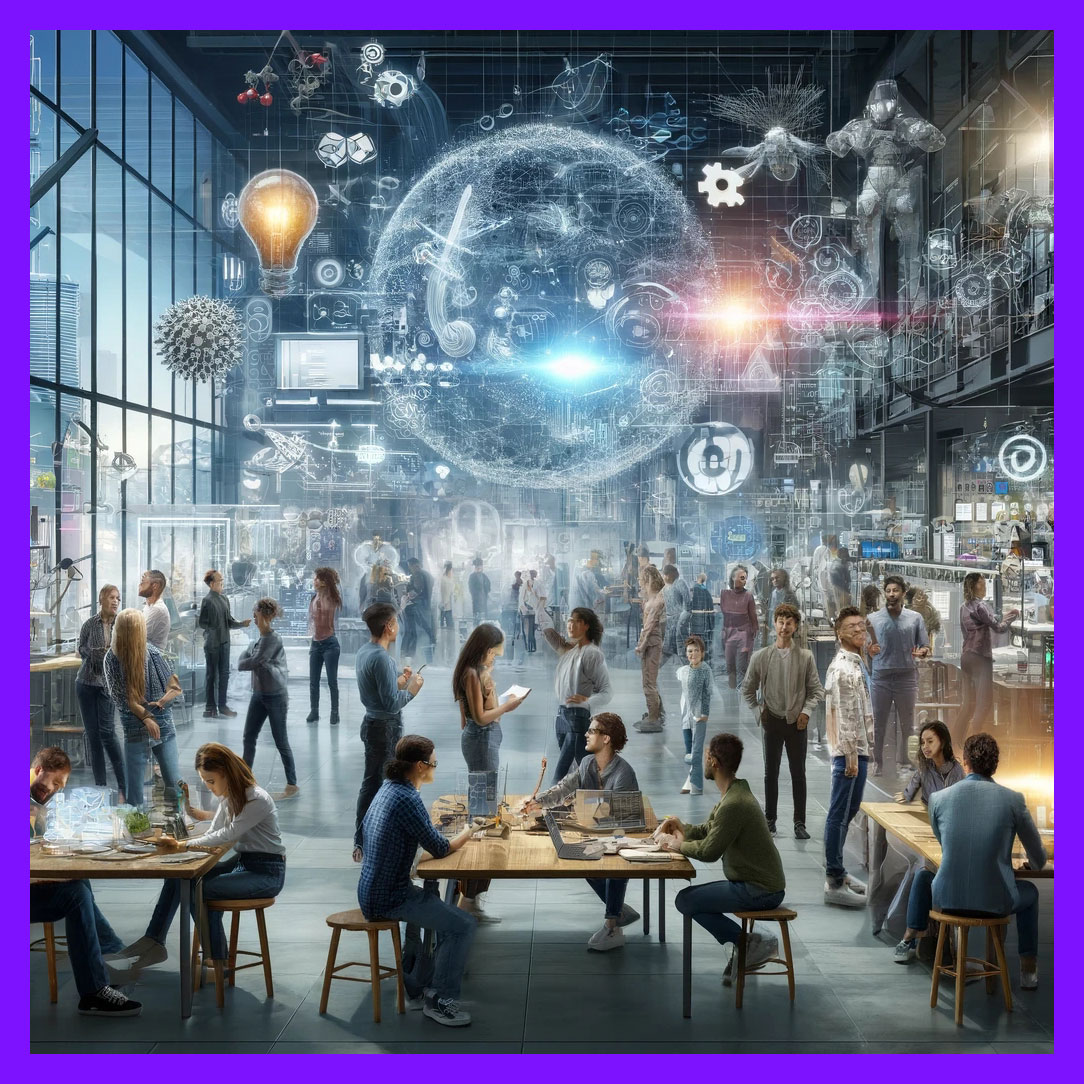
What is Innovation?
What Does it Mean?
Innovation, at its core, is the process of introducing new ideas, devices, or methods. However, it's more than just inventing something entirely new; it's also about improving existing solutions in a way that adds value or solves problems more effectively. Innovation can occur in any field or industry, from technology to education, healthcare, and even social practices.
Key aspects of innovation
- Novelty: Introducing something new or significantly improved. This could be a product, a service, or a process.
- Application: It's not just about the idea or invention itself but also its implementation and how it's used to change practices, create value, or improve efficiency.
- Value Creation: Innovation should lead to benefits for users, organizations, or society as a whole. This could be in the form of increased efficiency, solving a complex problem, or creating a new market.
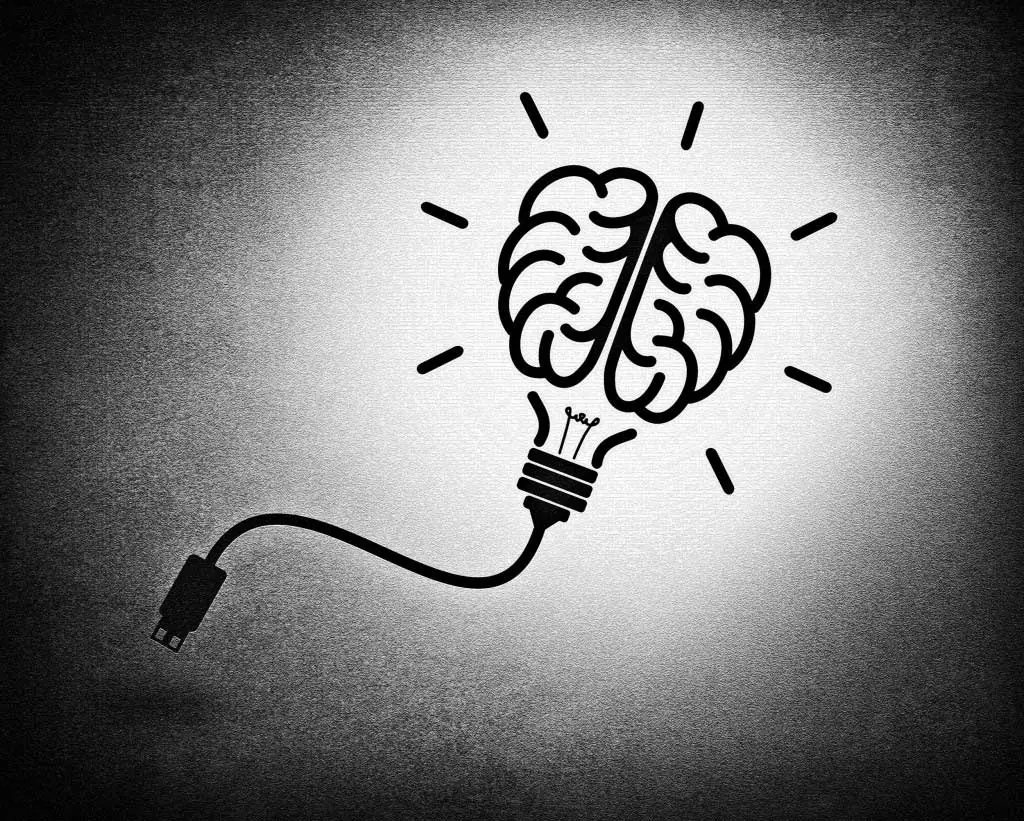
Examples of Innovation
- Product Innovation: The introduction of a new product, such as the smartphone, which revolutionized communication, entertainment, and information access.
- Process Innovation: A new way of producing goods or offering services, like the assembly line in manufacturing, which significantly increased production efficiency.
- Business Model Innovation: Changing the way business is done, such as the subscription model adopted by software companies, moving away from one-time purchases.
- Social Innovation: Initiatives that address social needs in a novel way, like microfinance in developing countries to help entrepreneurs start small businesses.
Innovation is not just about the "eureka" moment; it involves a series of steps from idea generation to research, development, and finally, implementation. It requires creativity, strategic thinking, and a willingness to take risks. Innovators often challenge the status quo, asking "why" or "what if" to explore new possibilities.
In summary, innovation means stepping beyond the current limits, whether by introducing new products or services, improving existing ones, or finding more efficient ways to solve problems. It's a dynamic process that combines creativity, practical implementation, and value creation.

Does Innovation Mean Change?
Absolutely, innovation inherently means change, but it's a specific type of change that introduces novelty and improvement. It's about altering the status quo by introducing new methods, ideas, or products that significantly affect how we live, work, or interact. Innovation is not just any change; it's a deliberate application of information, imagination, and initiative to derive greater or different values from existing resources, leading to a new or improved offering.
Key Dimensions of Change Through Innovation
- Technological Change: Often the first thing that comes to mind with innovation, this change involves the development and application of new technologies or the novel use of existing technologies to create new products or improve processes.
- Cultural/Social Change: Innovations can lead to changes in social behaviors or cultural norms. For example, the rise of social media has fundamentally altered how we communicate, form relationships, and consume information.
- Economic Change: Innovation can disrupt or create markets, leading to significant economic shifts. Companies like Uber and Airbnb have transformed traditional industries (accommodation and transportation, respectively) with new business models.
- Organizational Change: Within companies, innovation can lead to new ways of working, new product lines, or improved processes that enhance efficiency and competitiveness.
Characteristics of Change Driven by Innovation
- Intentional: Unlike change that happens organically, innovation is usually a result of a deliberate effort to solve a problem or address a need.
- Directional: Innovation leads change in a specific direction, often towards growth, efficiency, sustainability, or inclusivity.
- Disruptive: Some innovations can disrupt existing markets by rendering old technologies or methods obsolete.
- Progressive: Innovation is about progress, moving forward by improving on what currently exists or introducing entirely new concepts.
Examples Illustrating Change Through Innovation
 Digital Photography: Disrupted the traditional film industry by offering a new way to capture, store, and share images, leading to significant changes in how people document life events.
Digital Photography: Disrupted the traditional film industry by offering a new way to capture, store, and share images, leading to significant changes in how people document life events.- Renewable Energy Technologies: Innovations in solar and wind energy are changing the global energy landscape, driving a shift towards more sustainable and environmentally friendly energy sources.
- Mobile Computing: Smartphones and tablets have changed not just the telecommunications industry but also impacted retail, education, and entertainment, altering daily life and business operations worldwide.
In summary, innovation is a catalyst for change, pushing boundaries and challenging conventional wisdom. It's about seeing beyond the current reality to what could be, driving societal, economic, and organizational transformation. Innovation embodies the change that is intentional, directional, often disruptive, and always progressive, aiming to create a better future.

Can Innovation be Managed?
Innovation, despite its inherent unpredictability and creative nature, can indeed be managed. Managing innovation involves creating an environment that fosters creativity and supports the development and implementation of new ideas. It's about balancing the freedom to explore and experiment with the strategic alignment of innovation efforts towards the organization's goals. Effective innovation management requires a combination of processes, strategies, tools, and leadership commitment to nurture and sustain innovation.
Key Elements of Managing Innovation
- Culture: Cultivating a culture that encourages risk-taking, values creativity, and supports learning from failure is crucial. An innovative culture empowers employees to share and develop their ideas without fear of criticism or failure.
- Process: While innovation itself can be serendipitous, having a structured process for managing the innovation lifecycle—from ideation to commercialization—helps in systematically nurturing and implementing new ideas. This includes stages such as idea generation, selection, development, and scaling.
- Strategy: Aligning innovation initiatives with the organization's strategic objectives ensures that efforts are focused and contribute to long-term success. It involves setting clear innovation goals, priorities, and metrics.
- Leadership: Effective leadership is critical for managing innovation. Leaders must champion innovation, provide direction, resources, and support, and be willing to take calculated risks. They should also be adept at managing change and fostering an environment where innovative ideas can thrive.
- Collaboration: Innovation often requires cross-functional collaboration within the organization and with external partners, such as universities, research institutions, and other companies. Open innovation practices can enhance an organization's innovation capabilities by leveraging external ideas and markets.
- Resources: Providing the necessary resources, including funding, time, and tools, is essential for innovation to flourish. This also means offering training and development opportunities to enhance employees' creative and innovative skills.
- Measurement: Establishing metrics and KPIs (Key Performance Indicators) to measure the impact of innovation efforts helps in evaluating success and guiding future innovation activities. This includes not just financial metrics but also measures of market impact, process improvements, and cultural change.

Examples of Managed Innovation
- Google's "20% Time": Empowering employees to spend 20% of their time on projects that interest them, which has led to the development of key products like Gmail and AdSense.
- Pixar's Braintrust Meetings: Implementing a unique feedback system where creative teams present their work in progress to a group of peers for constructive critique, fostering a culture of trust and collaboration that has led to groundbreaking animated films.
- Netflix's Hack Days: Hosting regular hackathon events where employees across the company collaborate on new ideas and experiments for a day, many of which have been implemented to improve Netflix's user experience and operational efficiency.
- IDEO's Design Thinking: A structured approach to problem-solving and innovation that involves empathy, ideation, prototyping, and testing, applied across industries to develop innovative solutions.
In summary, while innovation itself can be seen as a spark of creativity or a moment of insight, managing innovation is about creating the right conditions for those sparks to ignite. It involves a deliberate approach to nurturing ideas, aligning them with strategic goals, and providing the support needed to bring them to life. Through effective management, organizations can enhance their capacity for innovation and maintain a competitive edge in rapidly changing markets.
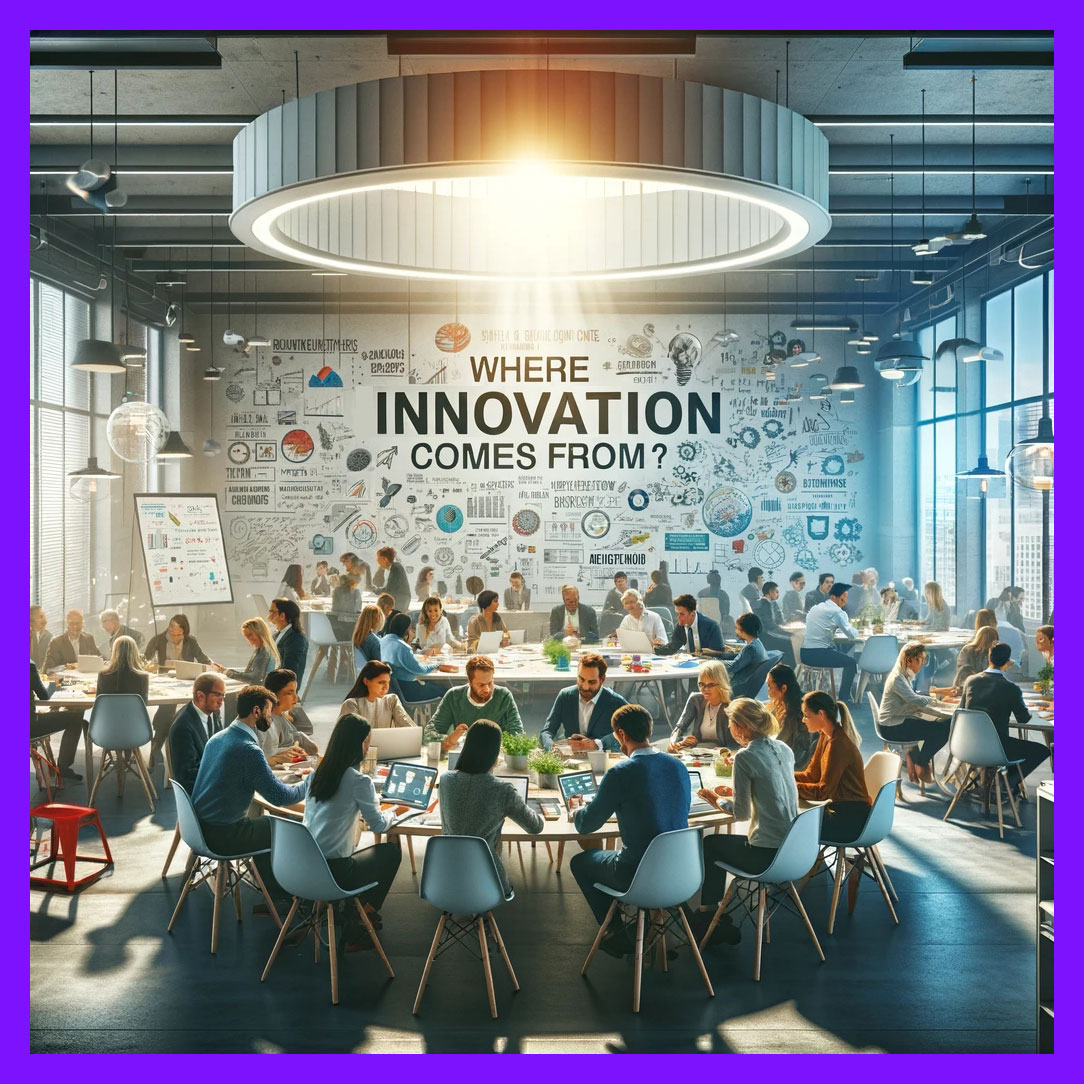
Where Innovation Comes From?
Innovation originates from a multitude of sources, both internal and external to an organization. It's a complex interplay of individual creativity, organizational processes, market needs, and technological advancements. Understanding where innovation comes from involves recognizing the diverse inputs and conditions that foster the generation of new ideas and their transformation into valuable products, services, or processes.
Key Sources of Innovation
- Individual Creativity: The foundation of innovation often lies in the creative thinking and problem-solving abilities of individuals. Personal experiences, expertise, and the ability to think differently are crucial drivers of innovation.
- For example: An engineer at Dyson, inspired by industrial cyclone towers, invents the first bagless vacuum cleaner, revolutionizing home cleaning.
- For example: An engineer at Dyson, inspired by industrial cyclone towers, invents the first bagless vacuum cleaner, revolutionizing home cleaning.
- Customer Insights: Direct feedback or observed behaviors of customers can highlight unmet needs or problems, sparking ideas for new products or improvements. User-driven innovation is particularly powerful in developing solutions that closely match market demands.
- For example: Starbucks introduces Pumpkin Spice Latte after noticing customers' discussions and requests for more seasonal products, creating a cult favorite.
- For example: Starbucks introduces Pumpkin Spice Latte after noticing customers' discussions and requests for more seasonal products, creating a cult favorite.
- Technological Advances: Breakthroughs in technology can open up new possibilities for innovation. The emergence of digital technologies, artificial intelligence, and biotechnology, for example, has led to significant innovations across various industries.
- For example: The development of CRISPR technology enables precise genetic editing, opening new frontiers in medicine, agriculture, and beyond.
- For example: The development of CRISPR technology enables precise genetic editing, opening new frontiers in medicine, agriculture, and beyond.
 Market Changes: Shifts in market trends, consumer preferences, and competitive dynamics can be a rich source of innovation. Companies often innovate to gain a competitive edge, enter new markets, or respond to changes in consumer demand.
Market Changes: Shifts in market trends, consumer preferences, and competitive dynamics can be a rich source of innovation. Companies often innovate to gain a competitive edge, enter new markets, or respond to changes in consumer demand.
- For example: Responding to a growing interest in health, sustainability, and animal welfare, Beyond Meat innovated by creating plant-based meat substitutes that closely mimic the taste and texture of real meat.
- For example: Responding to a growing interest in health, sustainability, and animal welfare, Beyond Meat innovated by creating plant-based meat substitutes that closely mimic the taste and texture of real meat.
- Collaboration and Networks: Ideas and innovations can emerge from collaboration between individuals, teams, and organizations. Networks and partnerships, including with universities, research institutions, suppliers, and even competitors, can provide new insights and accelerate innovation.
- For example: Google and NASA collaborate to launch Quantum Artificial Intelligence Laboratory, leveraging quantum computing to solve complex problems faster.
- For example: Google and NASA collaborate to launch Quantum Artificial Intelligence Laboratory, leveraging quantum computing to solve complex problems faster.
- Organizational Culture and Structure: Companies that cultivate a culture of curiosity, openness, and risk-taking, and that have structures in place to support innovation, are more likely to generate and successfully implement new ideas.
- For example: Pixar's open office layout and culture of candid feedback foster creativity and collaboration, leading to a string of successful animated films.
- For example: Pixar's open office layout and culture of candid feedback foster creativity and collaboration, leading to a string of successful animated films.
- Regulatory and Social Changes: Changes in regulations, societal challenges, and environmental concerns can drive innovation aimed at compliance, social responsibility, or solving global issues.
- For example: The introduction of GDPR in Europe sparks innovation in data privacy and security services, helping businesses comply with new regulations.
- For example: The introduction of GDPR in Europe sparks innovation in data privacy and security services, helping businesses comply with new regulations.
- Serendipity: Sometimes, innovation results from unexpected discoveries or the serendipitous combination of ideas and concepts.
- For example: The discovery of penicillin by Alexander Fleming, when a mold accidentally contaminates a petri dish, leading to the development of antibiotics.
- For example: The discovery of penicillin by Alexander Fleming, when a mold accidentally contaminates a petri dish, leading to the development of antibiotics.
- Products and Services: Evolution patterns of products and services can be used to introduce similar patterns to other products and services. In fact, the Systematic Inventive Thinking (SIT) methodology uses 6 common patterns to predict almost all possible future innovations in specific products and services.
 For example, the multiplication pattern, evident in many products (such as Gillette’s dual and then triple-blade razors, double-decker buses, double-engine airplanes, and McDonald’s triple burgers), was used in our Systematic InnovationTM workshops to develop many innovative solutions, including a double lock mechanism in safety boxes, double-headed bar clamps, and two-sided credit cards.
For example, the multiplication pattern, evident in many products (such as Gillette’s dual and then triple-blade razors, double-decker buses, double-engine airplanes, and McDonald’s triple burgers), was used in our Systematic InnovationTM workshops to develop many innovative solutions, including a double lock mechanism in safety boxes, double-headed bar clamps, and two-sided credit cards.- Note: Using all six SIT thinking tools, a team can predict 80% or more of all possible future innovations for a given product or service, without having to rely on all other innovation resources, and certainly without having to wait for serendipity moments.
Strategies to Harness Sources of Innovation
- Use Systematic Inventive Thinking (SIT) tools: as explained above, it will allow you to predict the future evolution of a given product or service.
- Encourage a Culture of Continuous Learning: Promote an environment where employees are encouraged to learn, experiment, and take risks.
- Engage with Customers: Implement mechanisms to gather and analyze customer feedback and involve them in the development process.
- Invest in R&D: Allocate resources to research and development to explore new technologies and methodologies.
- Foster Collaboration: Create platforms for collaboration both internally and with external partners to share knowledge and ideas.
- Adapt to Market Changes: Stay agile and responsive to market trends and shifts in consumer behavior.
- Innovate Responsively to Societal Needs: Align innovation efforts with social challenges and regulatory changes to create value beyond profits.
In summary, innovation is not confined to a single source or moment of inspiration. It's a multifaceted process influenced by a variety of factors, including Systematic Inventive Thinking tools, individual creativity, technological progress, market dynamics, and societal needs. By understanding and actively engaging with these sources, organizations can enhance their innovation potential and develop solutions that are both impactful and sustainable.
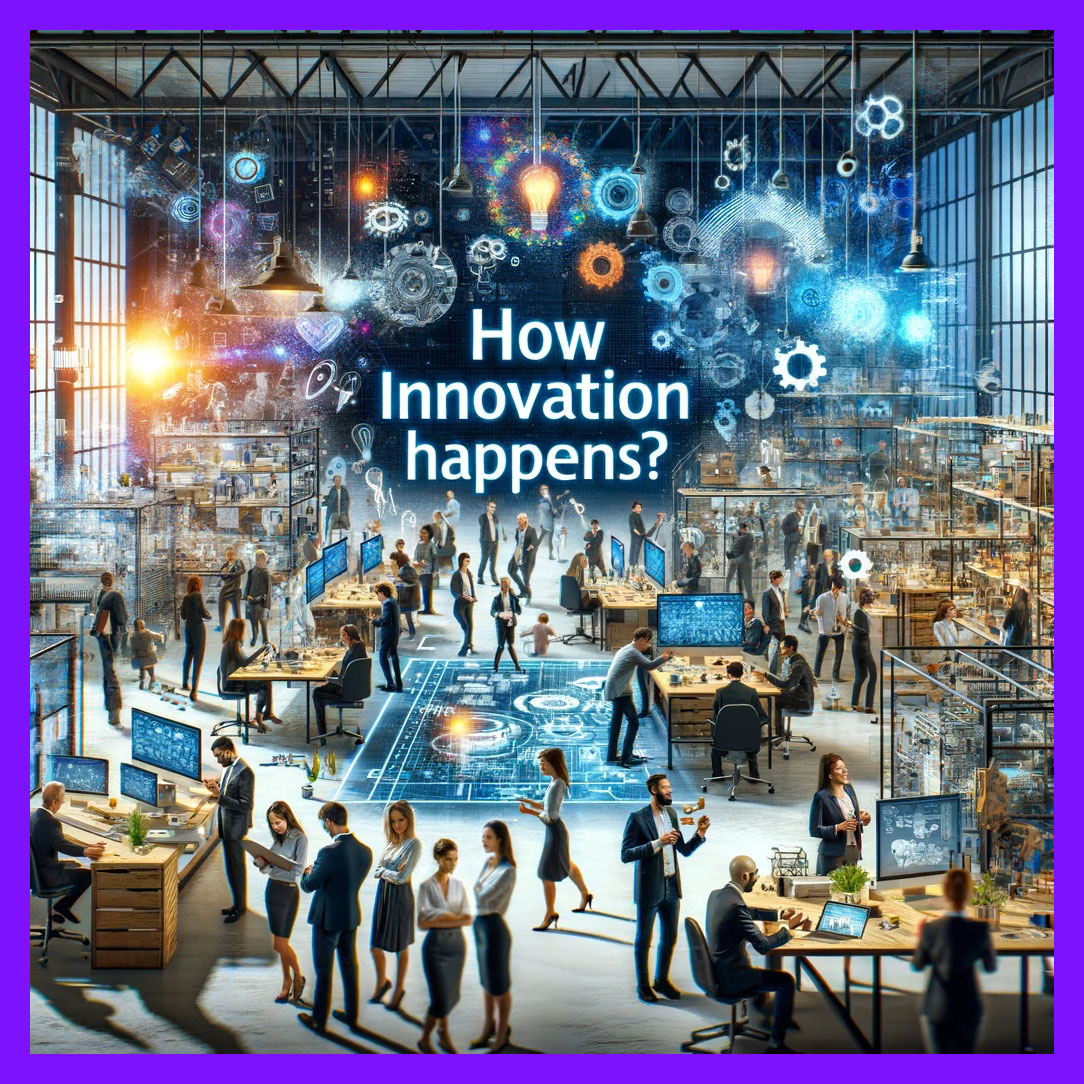
How Innovation Happens?
Innovation is a dynamic and often nonlinear process that can vary significantly from one context to another. However, it generally follows a pattern of identifying a problem or opportunity, generating ideas, and then implementing those ideas to create value. Understanding how innovation happens involves looking at the mechanisms, environments, and behaviors that facilitate the journey from concept to reality.
Stages of the Innovation Process
- Idea Generation (Ideation): The process begins with the generation of new ideas. This can be facilitated through brainstorming sessions, creative thinking exercises, or structured methodologies like SIT and Design Thinking. Diversity of thought and cross-disciplinary teams often enhance the quality and quantity of ideas generated.
- Concept Development: Ideas are then evaluated and developed into more detailed concepts. This stage may involve preliminary market research, feasibility studies, and initial design sketches. It's about refining the idea and beginning to consider its practical implementation.
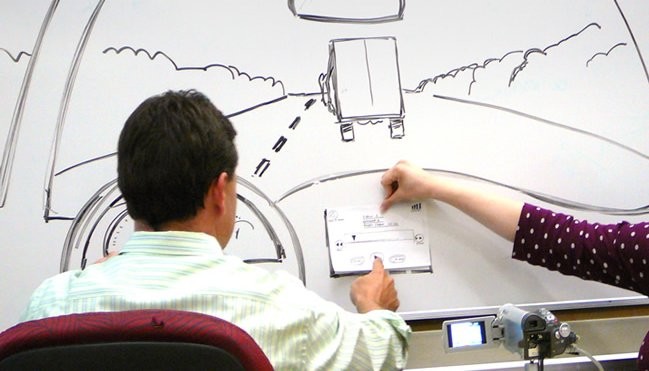 Prototyping and Testing: Concepts are turned into prototypes, which are then tested. Testing can be done internally or with potential users to gather feedback. This stage is crucial for identifying flaws, understanding user needs, and making necessary adjustments.
Prototyping and Testing: Concepts are turned into prototypes, which are then tested. Testing can be done internally or with potential users to gather feedback. This stage is crucial for identifying flaws, understanding user needs, and making necessary adjustments.- Implementation: Once a prototype has been refined and tested, the innovation is ready for implementation. This involves scaling up production, marketing the innovation, and integrating it into existing systems or processes. For service innovations, this may involve training staff and rolling out new operational procedures.
- Diffusion and Adoption: The final stage is the widespread adoption and diffusion of innovation. Marketing strategies, distribution channels, and sometimes a bit of luck play roles in how quickly and broadly an innovation is adopted.
Factors Influencing How Innovation Happens
- Organizational Culture: A culture that encourages experimentation, tolerates failure, and values creativity is essential for innovation to flourish.
- Leadership: Visionary leadership that supports innovation initiatives and provides the necessary resources and autonomy is critical.
- Collaboration: Partnerships and collaborations can provide new insights, access to additional resources, and pathways to market.
 Resources: Adequate funding, time, and tools are necessary to develop and implement innovative ideas.
Resources: Adequate funding, time, and tools are necessary to develop and implement innovative ideas.- External Environment: Market demands, technological advancements, and social trends can influence the direction and success of innovation efforts.
- Regulatory Frameworks: Regulations can either hinder or foster innovation, depending on how they are structured and enforced.
Examples of How Innovation Happens
- Apple's iPhone: The development of the iPhone involved rethinking the mobile phone as a computing device and user interface, leading to a product that revolutionized the smartphone market.
 Tesla's Electric Vehicles: Tesla's approach to electric vehicles involved not just developing new battery technology but also reimagining the car's design, performance, and user experience.
Tesla's Electric Vehicles: Tesla's approach to electric vehicles involved not just developing new battery technology but also reimagining the car's design, performance, and user experience.- Amazon's Kindle: The creation of the Kindle was a result of redefining reading through technology, combining e-ink display technology with a vast digital library, fundamentally changing how people access and read books.
In summary, innovation happens through a structured yet flexible process that involves ideation, development, testing, and implementation. It is influenced by a combination of internal and external factors, including culture, leadership, collaboration, and the broader socio-economic environment. Understanding these dynamics can help organizations and individuals navigate the complexities of innovation more effectively.
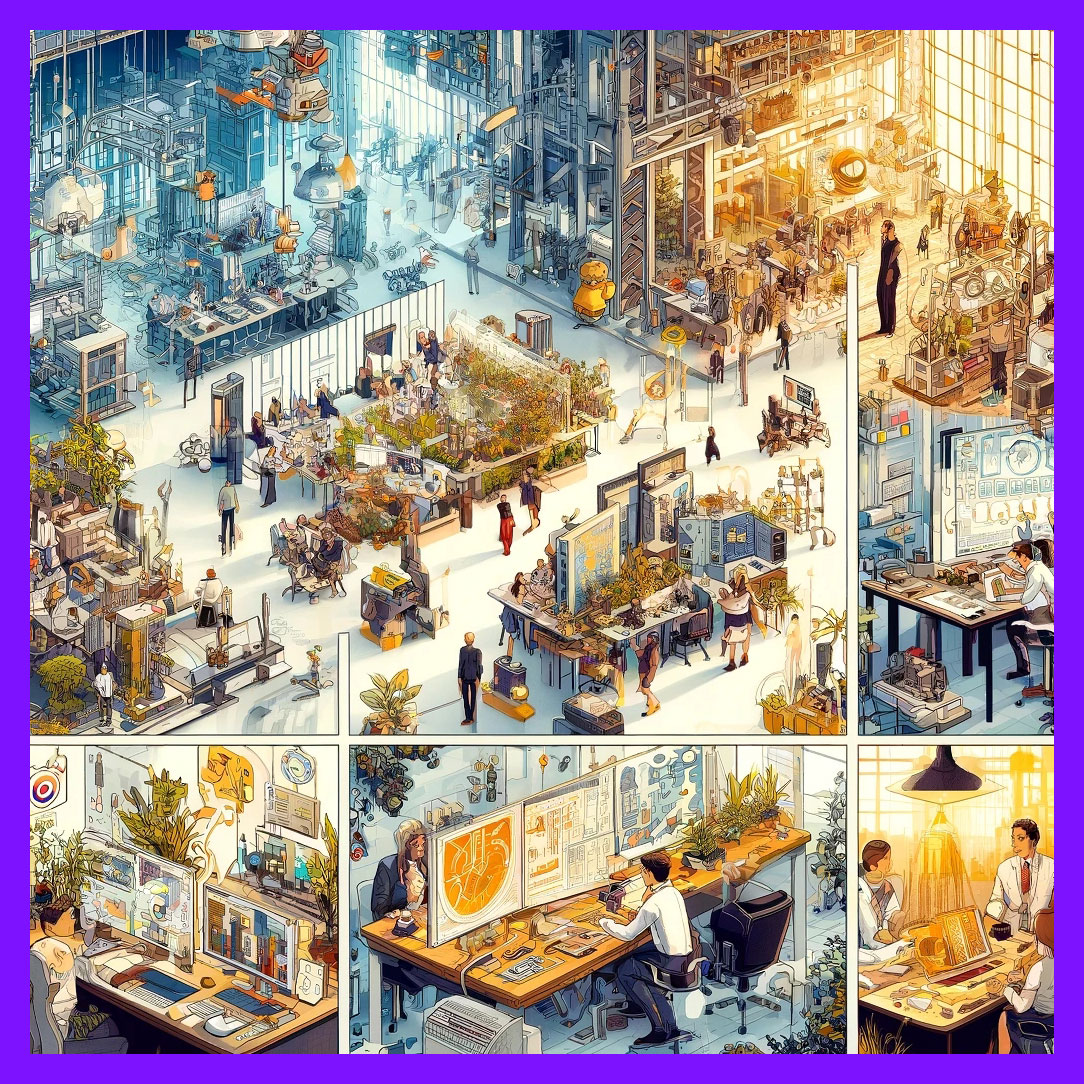
Where Innovation Happens? What Leads to it?
Innovation can occur in a variety of settings, from the garage of a solo inventor to the sprawling campuses of global corporations, and in academic labs or community spaces. However, it's not just about the physical location; it's more about the ecosystem and culture that foster the generation and implementation of new ideas. Understanding where innovation happens and what leads to it involves examining both the environments that nurture innovation and the conditions that catalyze it.
Environments Conducive to Innovation
- Organizational Environments: Companies that prioritize research and development (R&D), encourage cross-functional collaboration, and maintain a culture of continuous learning and experimentation tend to be hotbeds of innovation. Google, 3M, and Tesla are examples of organizations where innovation is part of the corporate DNA.
- Academic and Research Institutions: Universities and research institutions are traditional sources of innovation, particularly in science and technology. The freedom to explore fundamental questions, access to research funding, and the collaboration across disciplines contribute to groundbreaking discoveries.
- Start-up Ecosystems: Start-up ecosystems, such as Silicon Valley, Tel-Aviv and Bengaluru (Bangalore), provide a unique combination of venture capital, entrepreneurial talent, and a culture of risk-taking that supports rapid innovation and disruption.
 Innovation Hubs and Incubators: These are designed spaces or communities that provide resources, mentorship, and networking opportunities for innovators and entrepreneurs. They act as catalysts for turning ideas into viable products or businesses.
Innovation Hubs and Incubators: These are designed spaces or communities that provide resources, mentorship, and networking opportunities for innovators and entrepreneurs. They act as catalysts for turning ideas into viable products or businesses.- Online Platforms and Communities: The internet has enabled virtual collaboration on a global scale. Platforms like GitHub, Kickstarter, and various innovation challenges and hackathons bring together diverse groups of people to solve problems and develop and promote new technologies.
Conditions That Lead to Innovation
- Diverse Perspectives and Interdisciplinary Teams: Innovation often arises from the intersection of different fields and perspectives. Bringing together people with varied backgrounds and expertise can spark creative solutions to complex problems.
- Challenging Problems and Unmet Needs: Necessity is the mother of invention. Challenges, whether societal, technological, or environmental, can drive innovation by necessitating new solutions.
- Supportive Policies and Funding: Government policies that support research and development, protect intellectual property, and provide funding for innovation can significantly impact where and how innovation happens.
- Access to Technology and Information: The availability of advanced technologies and easy access to information accelerates the pace of innovation by enabling rapid prototyping, testing, and dissemination of ideas.
- A Culture of Curiosity and Experimentation: Environments that encourage questioning, exploration, and learning from failure are essential for sustaining innovation.
Examples
- Silicon Valley: Known as the global center for high technology and innovation, Silicon Valley benefits from a combination of venture capital, technical expertise, and a culture of innovation.
- MIT Media Lab: A research laboratory at the Massachusetts Institute of Technology, known for its unconventional, interdisciplinary blending of technology, multimedia, sciences, art, and design.
In summary, innovation happens in environments that support experimentation, offer resources and knowledge, and bring together diverse talents to tackle challenges. These settings, characterized by a culture of curiosity and openness, facilitate the cross-pollination of ideas and foster the conditions necessary for innovation to thrive.

How Does Innovation Work?
Understanding how innovation works involves dissecting the mechanisms and processes that transform an idea into a tangible product, service, or method that adds value or improves upon existing standards. Innovation is not a linear process; it often involves iterative cycles of development, feedback, and refinement.
Here’s a closer look at the key components and phases that constitute the workings of innovation:
Key Components of How Innovation Works
- Idea Generation: The starting point of innovation is the generation of ideas. This can stem from individual creativity, customer feedback, market research, or technological advancements. Effective ideation sessions, proven thinking tools, open innovation platforms, and fostering a culture that encourages curiosity are vital for nurturing this phase.
- Feasibility Analysis: Once an idea is generated, its feasibility in terms of technical implementation, market viability, and financial sustainability is assessed. This stage often requires conducting thorough research, market analysis, and preliminary concept tests to evaluate the potential success of the innovation.
- Development and Prototyping: Developing a prototype or a minimum viable product (MVP) allows innovators to bring their ideas to life. This phase is crucial for understanding how the product functions in real-world scenarios, identifying essential improvements, and gathering user feedback.
 Iteration: Based on feedback and testing results, the product or service undergoes several iterations. This phase is characterized by continuous improvement, where features are added, modified, or removed to enhance the innovation’s value and effectiveness.
Iteration: Based on feedback and testing results, the product or service undergoes several iterations. This phase is characterized by continuous improvement, where features are added, modified, or removed to enhance the innovation’s value and effectiveness.- Implementation and Scaling: Successful prototypes are then moved towards full-scale production and market launch. This phase involves strategies for manufacturing, marketing, distribution, and sales. Scaling an innovation may also require adapting it to different markets or segments.
- Diffusion and Adoption: For an innovation to have an impact, users must adopt it. This involves strategies to increase market penetration and encourage adoption, such as promotional campaigns, partnerships, and user education.

Factors Influencing How Innovation Works
- Collaboration: Bringing together diverse skill sets and perspectives can enhance the innovation process, from ideation through to market launch.
- Resource Allocation: Adequate funding, time, and tools are essential for developing and testing new ideas.
- Risk Management: Innovators must navigate uncertainties and be prepared to pivot or iterate based on feedback and changing market conditions.
- Intellectual Property Protection: Securing patents or trademarks can be crucial for protecting innovation and ensuring a competitive advantage.
- Market Insights: A deep understanding of the target market, including customer needs and competitive landscape, guides the innovation towards success.
Examples of How Innovation Works
- Apple’s iPhone: The development of the iPhone involved integrating existing technologies (like touchscreens and mobile phones) in a novel way, coupled with Apple’s emphasis on design and user experience.
- Tesla’s Electric Vehicles: Tesla’s approach to innovation included not just developing electric cars but also building a network of charging stations, thereby addressing a significant barrier to EV adoption.
In summary, innovation works through a complex, iterative process of idea generation, development, testing, and refinement, leading to the implementation and widespread adoption of new solutions. It requires a blend of creativity, strategic planning, and execution, supported by a culture that values experimentation and learning from failure.
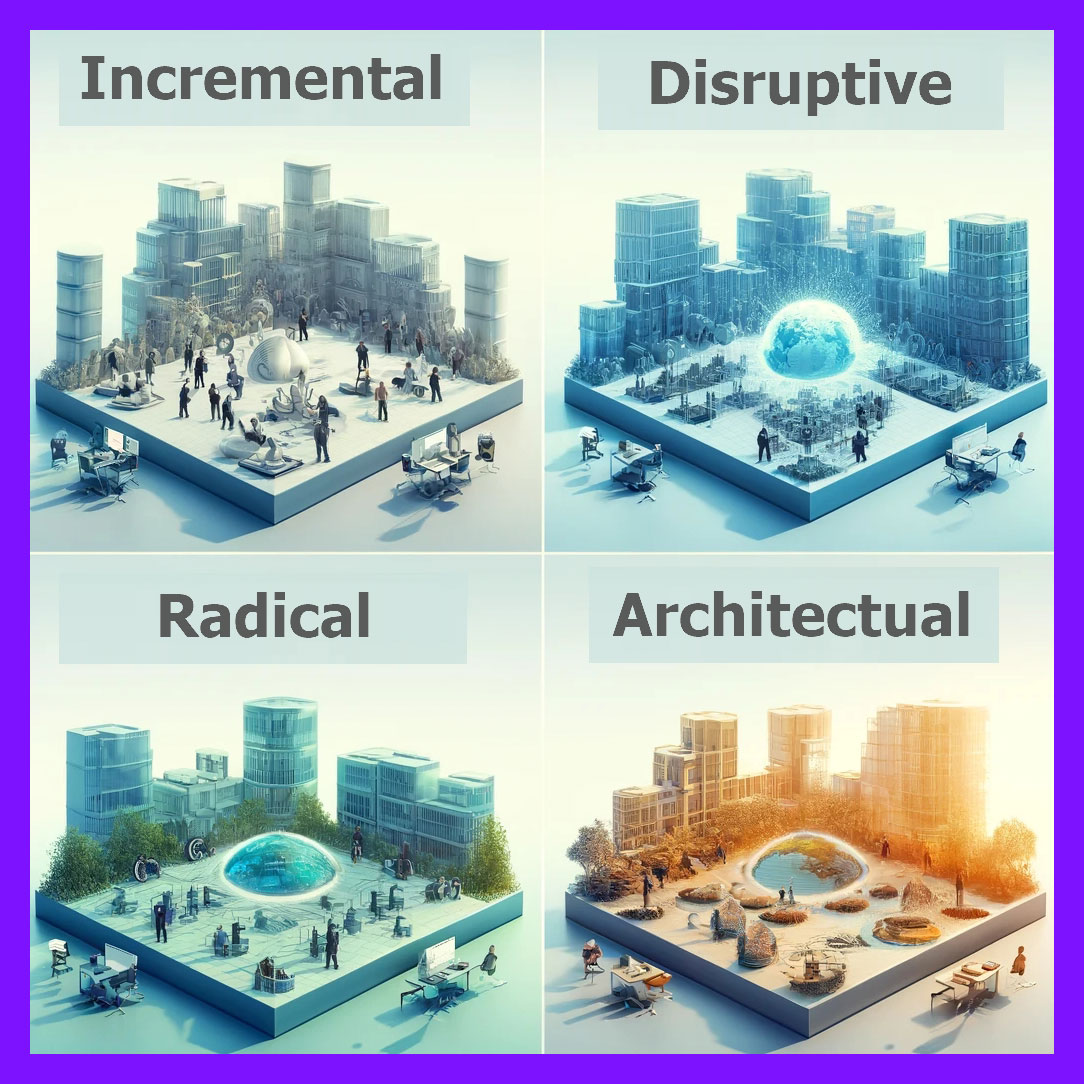
The 4 Types of Innovation
Innovation can be categorized into four main types based on the nature of the innovation and the impact it has on the market or technology. These categories help businesses and researchers understand where their innovation efforts may fit within the broader ecosystem and how they might approach the development and implementation of new ideas.
Here are descriptions of each of the 4 types of innovation:
- Incremental Innovation: Incremental innovation refers to small improvements or upgrades made to existing products, services, or processes. These innovations may enhance efficiency, add new features, or reduce costs, but they don't fundamentally change the market.
- Example: The yearly updates to smartphones, such as improved camera quality or battery life, are examples of incremental innovation. Each new model offers enhancements that improve upon the previous version without drastically altering the product's fundamental design or functionality.
- Example: The yearly updates to smartphones, such as improved camera quality or battery life, are examples of incremental innovation. Each new model offers enhancements that improve upon the previous version without drastically altering the product's fundamental design or functionality.
- Disruptive Innovation: Disruptive innovation creates a new market and value network, eventually displacing established market-leading firms, products, and alliances. It often starts by targeting overlooked segments of the market before moving upmarket.
- Example: Netflix’s shift from DVD rentals to streaming services disrupted the traditional video rental industry, eventually leading to the decline of brick-and-mortar rental stores like Blockbuster.
- Example: Netflix’s shift from DVD rentals to streaming services disrupted the traditional video rental industry, eventually leading to the decline of brick-and-mortar rental stores like Blockbuster.
- Radical Innovation: Radical innovation involves developing a new product, service, or process that significantly impacts an industry or market. This type of innovation can create entirely new industries or render existing ones obsolete.
- Example: The invention of the internet is a radical innovation that transformed how people communicate, access information, and do business, leading to the creation of entirely new industries such as e-commerce, online advertising, and digital media.
- Example: The invention of the internet is a radical innovation that transformed how people communicate, access information, and do business, leading to the creation of entirely new industries such as e-commerce, online advertising, and digital media.
- Architectural Innovation: Architectural innovation refers to taking the skills, technologies, or processes from one industry or market and applying them in a different context. This type of innovation reconfigures existing systems to create new markets or value networks.
- Example: Fitbit's Wearable Technology: Fitbit took sensor technology and applied it to the health and fitness industry, creating wearable devices that track physical activity and vital signs, thereby pioneering a new market for personal health monitoring.
Understanding the Types of Innovation
Recognizing the type of innovation is crucial for businesses as it influences the strategy for development, market entry, and competition. For instance, incremental innovations may require a focus on efficiency and customer feedback loops, while disruptive innovations might need a more aggressive approach to market penetration and scaling.
Moreover, the specific type of innovation can affect funding strategies, with radical and disruptive innovations often requiring significant investment in research and development before becoming profitable. In contrast, incremental and architectural innovations might be more immediately aligned with existing business models and revenue streams.
Strategic Implications
- Incremental and Architectural Innovations are often less risky and can be pursued by established companies looking to maintain their market position and gradually expand their offerings.
- Disruptive and Radical Innovations may be more suited to startups or established companies looking to enter new markets or create new categories, although they come with higher risk and potentially higher rewards.
In summary, understanding these four types of innovation helps organizations strategically plan their innovation efforts, allocate resources effectively, and anticipate the potential impact on their business and the market. Each type of innovation plays a crucial role in driving progress and competitiveness in today's rapidly changing world.

Which Country is Best in Innovation?
Identifying the "best" country in innovation is a complex task, as it depends on various metrics, including the number of patents filed, research and development (R&D) expenditure, the density of tech companies, and the environment that supports creative thinking and entrepreneurship. However, several global indexes rank countries based on their innovation capabilities, with the Global Innovation Index (GII) being one of the most recognized.
Top 10 Countries Known for Innovation
(Source: Global Innovation Index 2023 Ranking)
- Switzerland: Switzerland consistently ranks at the top of the Global Innovation Index. Its strengths include a highly developed education system, substantial investment in R&D, and strong intellectual property rights. The country excels in pharmaceuticals, biotechnology, and precision manufacturing.
- Sweden: Sweden's innovation ecosystem is supported by a robust education system, high levels of government and private R&D spending, and a culture that encourages entrepreneurship. Sweden is known for its advancements in telecommunications, automotive, and environmental technologies.
- United States: The U.S. is a global leader in technological innovation, home to Silicon Valley, and numerous top-tier universities and research institutions. The country leads in software, aerospace, and biotechnology innovations, driven by a culture of entrepreneurship and venture capital investment.
- United Kingdom: The UK's innovation landscape is bolstered by world-renowned universities, a strong financial sector, and a global outlook. It shines in pharmaceuticals, fintech, and creative industries.
- Singapore: Singapore's strategic location, skilled workforce, and efficient government policies have made it a hub for innovation in Asia, particularly in biotechnology, finance, and urban solutions.
- Finland: Finland has a strong emphasis on education and R&D, particularly in technology and telecommunications. The country is recognized for its innovation in mobile communications, gaming, and environmental technology.
- Netherlands: Known for its open economy and excellent infrastructure, the Netherlands excels in agri-food, water management, and high-tech systems.
- Germany: Germany's innovation is driven by its strong focus on engineering, manufacturing, and a highly skilled labor force. The country excels in automotive, mechanical engineering, and clean energy technologies.
- Denmark: Denmark's focus on sustainability and design, combined with a highly educated workforce, drives its leadership in renewable energy and life sciences.
- South Korea: South Korea has made significant investments in education and R&D, leading to its position as a leader in electronics, telecommunications, and automotive innovation. The country is known for its rapid technological adoption and government support of innovation.

Top Countries Known for Entrepreneurship
Countries known for having a high density of startups per capita, making them standout locations for entrepreneurial activity and start-up eco-system, include:
- Israel: Often referred to as the "Startup Nation," Israel boasts a high number of startups per capita, supported by robust investment in tech and a strong culture of innovation.
- Estonia: With a digital-first government and initiatives like e-Residency, Estonia has become a hotspot for tech startups, offering a supportive environment for entrepreneurs.
- Singapore: Known for its strategic location, favorable business environment, and government support, Singapore has a high startup density, particularly in fintech and biotech.
- Switzerland: Switzerland's strong emphasis on research and development, coupled with high living standards and support for innovation, makes it a leading country for startups per capita, especially in biotech and MedTech.
- Sweden: With a reputation for innovation and a strong social safety net, Sweden has produced notable startups, particularly in tech and green energy sectors.
- Finland: Home to a thriving tech scene, Finland's emphasis on education and innovation has fostered a conducive environment for startups, especially in gaming and mobile technology.
- Denmark: Denmark's focus on sustainability and clean technology, along with a supportive startup ecosystem, has led to a high density of startups per capita.
- Iceland: Despite its small population, Iceland has a vibrant startup scene, driven by a strong entrepreneurial spirit and innovation in sectors like green energy and tech.
- New Zealand: With its ease of doing business and focus on innovation, New Zealand has become a nurturing ground for startups, especially in Agri-tech and digital businesses.
- Canada: Canada's diverse cities, such as Toronto, Vancouver, and Montreal, have become hubs for startups, supported by government initiatives and a focus on tech and AI.
Factors Contributing to a Country's Innovation Success
- Education and Research: Countries with strong education systems and research institutions tend to produce new knowledge and technologies that fuel innovation.
- Government Policy and Funding: Supportive government policies, including funding for R&D and incentives for startups, are crucial for fostering an innovation ecosystem.
- Cultural Attitude towards Entrepreneurship: A culture that encourages risk-taking, entrepreneurship, and accepts failure as part of the learning process is vital for innovation.
- Infrastructure: Good infrastructure, including technological infrastructure, supports the development and diffusion of innovation.
- Collaboration between Industry and Academia: Strong links between universities, research institutions, and businesses promote the transfer of knowledge and commercialization of research.
In summary, while several countries lead in various aspects of innovation, there is no single "best" country. The leaders in innovation share common traits such as robust education systems, significant investment in R&D, supportive government policies, and a culture that fosters creativity and entrepreneurship. Each country's unique approach to innovation reflects its economic priorities, cultural values, and historical context.
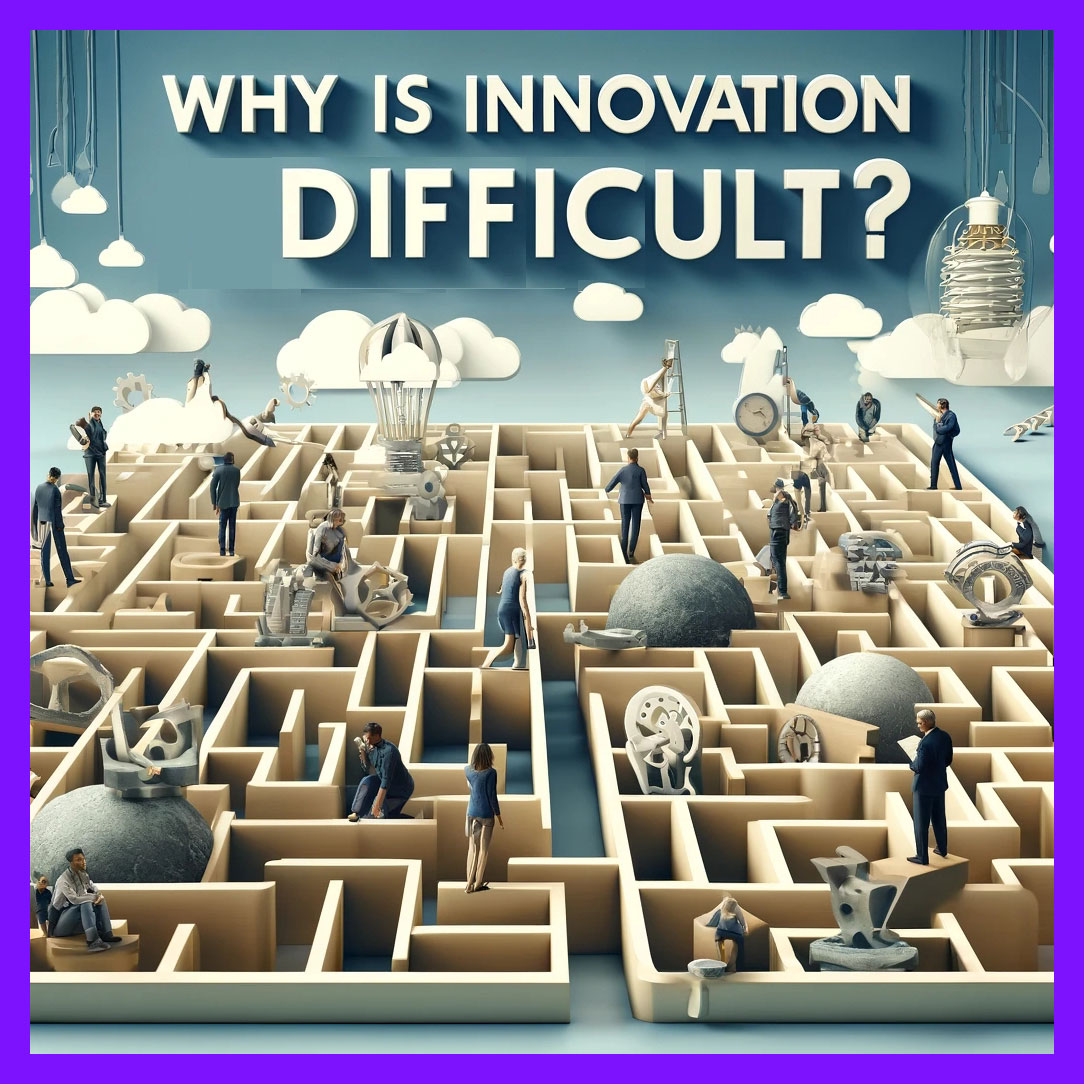
Why is Innovation Difficult?
Innovation is essential for progress and competitiveness, yet it remains a challenging endeavor for many organizations and individuals. The difficulty of innovation can be attributed to a variety of factors, ranging from cultural barriers to practical constraints. Understanding these challenges is the first step towards overcoming them and fostering a more innovative environment.
Key Challenges in Innovation
- Resistance to Change: Humans are naturally resistant to change. In organizations, this resistance can manifest as skepticism or opposition to new ideas, especially if they disrupt established practices or threaten existing power structures.
- Risk Aversion: Innovation involves uncertainty and the potential for failure, which can be daunting. Companies and individuals often prefer to stick with the known rather than venture into the unknown, leading to a preference for incremental improvements over radical or disruptive innovations.
- Resource Constraints: Innovation requires time, money, and human resources, which can be scarce. Allocating resources to unproven ideas can be particularly challenging for small businesses or in economic downturns.
- Lack of Creativity and Skills: Generating truly innovative ideas requires creativity and a diverse set of skills. Organizations may struggle if they lack a workforce that is encouraged and equipped to think creatively and execute those ideas.
- Regulatory and Market Barriers: Regulatory requirements, industry standards, and entrenched market leaders can create significant barriers to entry for innovative products or services, especially in highly regulated industries like healthcare and finance.
 Failure to Execute: Even when good ideas are generated, turning them into viable products or services is a complex process that can be hindered by poor execution, lack of strategic focus, or inadequate project management.
Failure to Execute: Even when good ideas are generated, turning them into viable products or services is a complex process that can be hindered by poor execution, lack of strategic focus, or inadequate project management.- Short-term Focus: The pressure to deliver immediate results can lead organizations to prioritize short-term gains over long-term innovation. This short-termism can stifle investment in research and development that is critical for innovation.
- Cultural Misalignment: An organizational culture that does not value or understand the importance of innovation can be a significant barrier. This includes cultures that fear failure, discourage open communication, or lack collaboration.
Strategies to Overcome Innovation Challenges
- Foster a Culture of Innovation: Create an environment that encourages experimentation, tolerates failure, and rewards creative thinking.
- Encourage Diversity and Inclusion: Diverse teams bring a range of perspectives and ideas, which can spark innovation.
- Invest in Training and Development: Equip employees with the skills and knowledge they need to innovate, including creative and inventive thinking, project management, and technical skills.
- Implement Strategic Resource Allocation: Dedicate resources specifically for innovation projects, including budget, time, and personnel.
- Engage in Open Innovation: Collaborate with external partners, such as startups, academia, or other industries, to bring in fresh ideas and accelerate innovation.
- Adopt Agile Methodologies: Agile approaches can help organizations respond quickly to changes, test ideas, and iterate based on feedback.
- Align Innovation with Strategy: Ensure that innovation efforts are aligned with the organization’s strategic goals and supported by top management.
- Isolate Radical Innovation Teams: Create separate spaces for disruptive innovation teams to work freely, away from core business constraints.
Innovation is difficult because it challenges the status quo and requires navigating uncertainties and risks. However, by understanding and addressing these challenges, organizations can create an environment where innovation thrives, driving growth and adaptation in an ever-changing world.
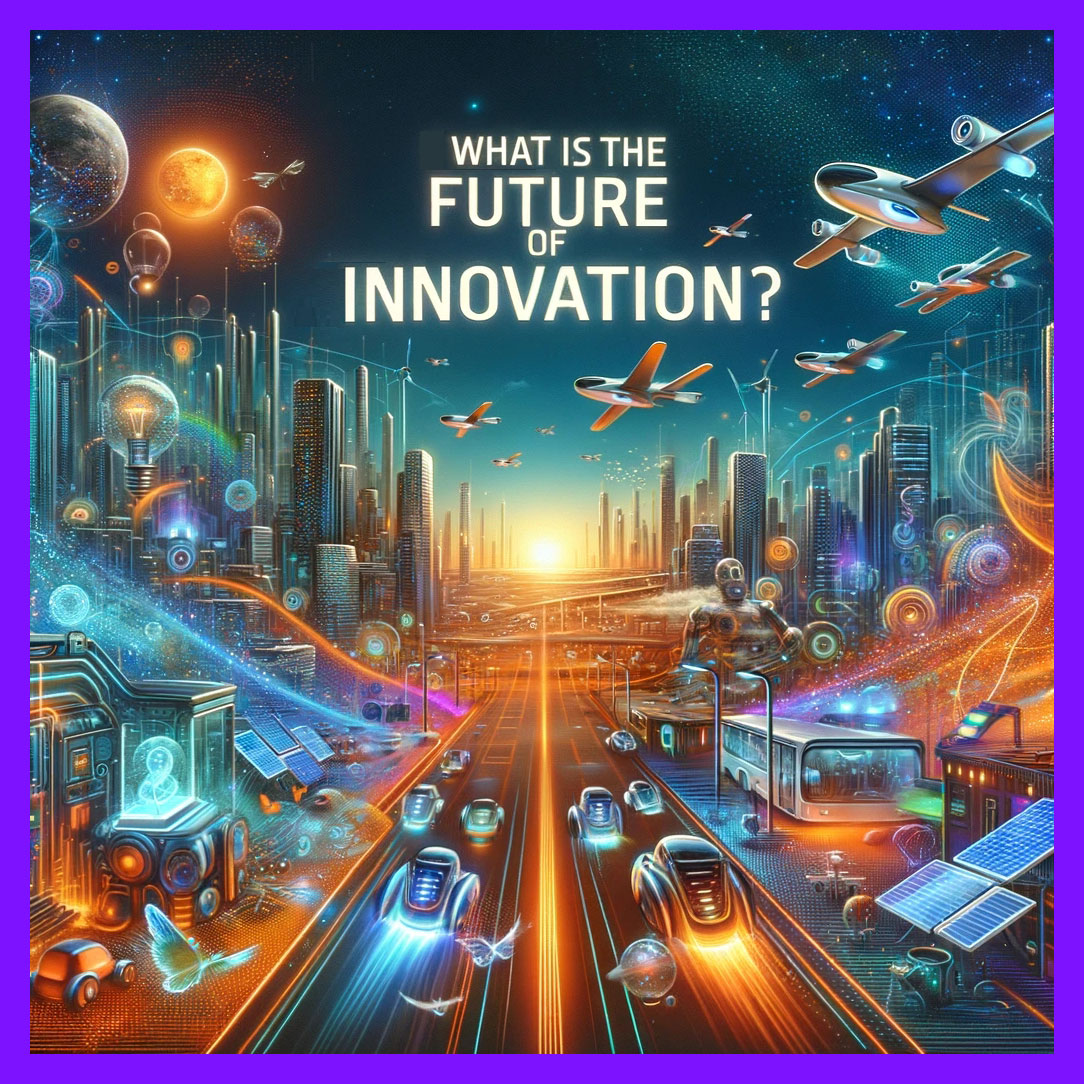
What is the Future of Innovation?
The future of innovation is shaped by rapidly evolving technologies, changing consumer needs, and global challenges. It promises to be both exciting and complex, with advancements that could transform industries, economies, and daily life. Understanding the trajectory of innovation involves looking at emerging trends, potential impacts, and how organizations and society might adapt to a future where change is the only constant.
Emerging Trends in Innovation
- Artificial Intelligence and Machine Learning: AI and ML are set to revolutionize how we process information, make decisions, and interact with technology. From personalized healthcare to autonomous vehicles and smart cities, AI will enable new levels of efficiency and personalization.
- Sustainability and Green Technologies: As the world confronts climate change and resource scarcity, innovation in sustainability and green technologies will become increasingly critical. This includes renewable energy, sustainable agriculture, and circular economy models that minimize waste and maximize resource efficiency.

Digital and Remote Work Technologies: The COVID-19 pandemic accelerated the adoption of remote work, leading to innovations in digital collaboration tools, virtual reality meeting spaces, and productivity management software. The future will likely see a continued focus on technologies that support flexible, remote, and hybrid work models.
- Healthcare and Biotechnology: Advances in genomics, personalized medicine, and wearable health technologies are transforming healthcare. Innovations in this space will focus on extending life, improving quality of life, and making healthcare more accessible and personalized.
- Decentralized Systems: Blockchain and other decentralized technologies offer new ways to manage data, conduct transactions, and build trust in digital interactions. This could lead to innovations in finance, supply chain management, and digital identity verification.
- Space Exploration and Exploitation: With the commercial space industry growing, innovation will expand beyond Earth. This includes satellite technologies, space tourism, and eventually, the exploitation of space resources and habitats.
Impacts and Adaptations
- Economic Shifts: The future of innovation will drive economic shifts, creating new industries and job roles while rendering others obsolete. Societies will need to adapt through education, training, and policies that support workforce transitions.
- Ethical and Privacy Concerns: As technology becomes more integrated into our lives, issues of privacy, data security, and ethical use of technology will become increasingly important. Innovators and regulators will need to work together to address these concerns.
- Global Collaboration: Many of the challenges and opportunities innovation presents are global in nature. Climate change, pandemics, and cybersecurity threats will require unprecedented levels of international collaboration and knowledge sharing.
- Inclusive Innovation: Ensuring that the benefits of innovation are widely distributed will be a critical challenge. This includes addressing digital gaps, ensuring access to healthcare, and creating inclusive economic opportunities.
The future of innovation is not without its challenges, but it also holds the promise of solving some of humanity's most pressing problems. Organizations, governments, and individuals will need to be agile, forward-thinking, and collaborative to harness the potential of new technologies and navigate the complexities of the future.

Business Innovation
Business innovation refers to the process by which organizations introduce new ideas, workflows, methodologies, services, or products with the aim of improving profitability and achieving a competitive edge. In today's rapidly changing business landscape, innovation is not just a nice-to-have but a necessity for survival and growth. The future of business innovation is likely to be characterized by several key trends and strategies that will shape how companies operate and compete.
Key Trends in Business Innovation
- Digital Transformation: Businesses across all sectors are leveraging digital technologies to transform their operations, customer experiences, and business models. This includes the adoption of cloud computing, big data analytics, AI, and IoT to improve efficiency, drive decision-making, and create new value for customers.
- Customer-Centric Innovation: The focus is shifting towards innovations that directly enhance customer experiences. Personalization, seamless omnichannel experiences, and responsive customer service are becoming critical competitive differentiators.
- Agile and Lean Methodologies: Companies are adopting agile and lean innovation methodologies to speed up the development process and improve responsiveness to market changes. This approach emphasizes rapid prototyping, continuous testing, and iteration to quickly adapt to customer needs and preferences.
- Collaborative Ecosystems: Increasingly, innovation is seen as a collaborative effort that extends beyond the boundaries of a single organization. Businesses are forming partnerships, alliances, and ecosystems that combine the strengths, resources, and expertise of multiple entities to drive innovation.
- Sustainability and Social Responsibility: There is a growing emphasis on innovations that not only drive economic value but also address social and environmental challenges. Sustainable business practices, eco-friendly products, and social responsibility initiatives are becoming integral to business innovation strategies.
- Workforce Transformation: As new technologies and business models emerge, there is a significant focus on workforce development and transformation. This includes reskilling and upskilling employees, fostering a culture of continuous learning, and leveraging talent from diverse backgrounds to drive innovation.
Strategies for Fostering Business Innovation
- Cultivate an Innovative Culture: Encourage a culture that values creativity, experimentation, and learning from failure. An environment where employees feel empowered to share and develop their ideas is crucial for innovation.
- Leverage Data and Analytics: Utilize data analytics to gain insights into market trends, customer behavior, and operational efficiencies. Data-driven decision-making can uncover new opportunities for innovation.
- Engage with Customers: Regularly engage with customers to understand their needs, preferences, and pain points. Customer feedback can be a valuable source of ideas for innovation.
- Invest in Technology: Stay abreast of technological advancements and invest in technologies that have the potential to transform your business operations, products, or services.
- Promote Cross-Functional Collaboration: Break down silos within the organization to promote collaboration between departments. Cross-functional teams can bring diverse perspectives and expertise to the innovation process.
- Monitor the Competitive Landscape: Keep an eye on competitors and industry trends to identify gaps in the market and opportunities for differentiation through innovation.
Business innovation is a dynamic and ongoing process that requires strategic vision, a willingness to take risks, and an unwavering commitment to meeting the evolving needs of customers. By staying attuned to the latest trends and adopting a proactive approach to innovation, businesses can navigate the complexities of the modern marketplace and achieve sustainable growth.
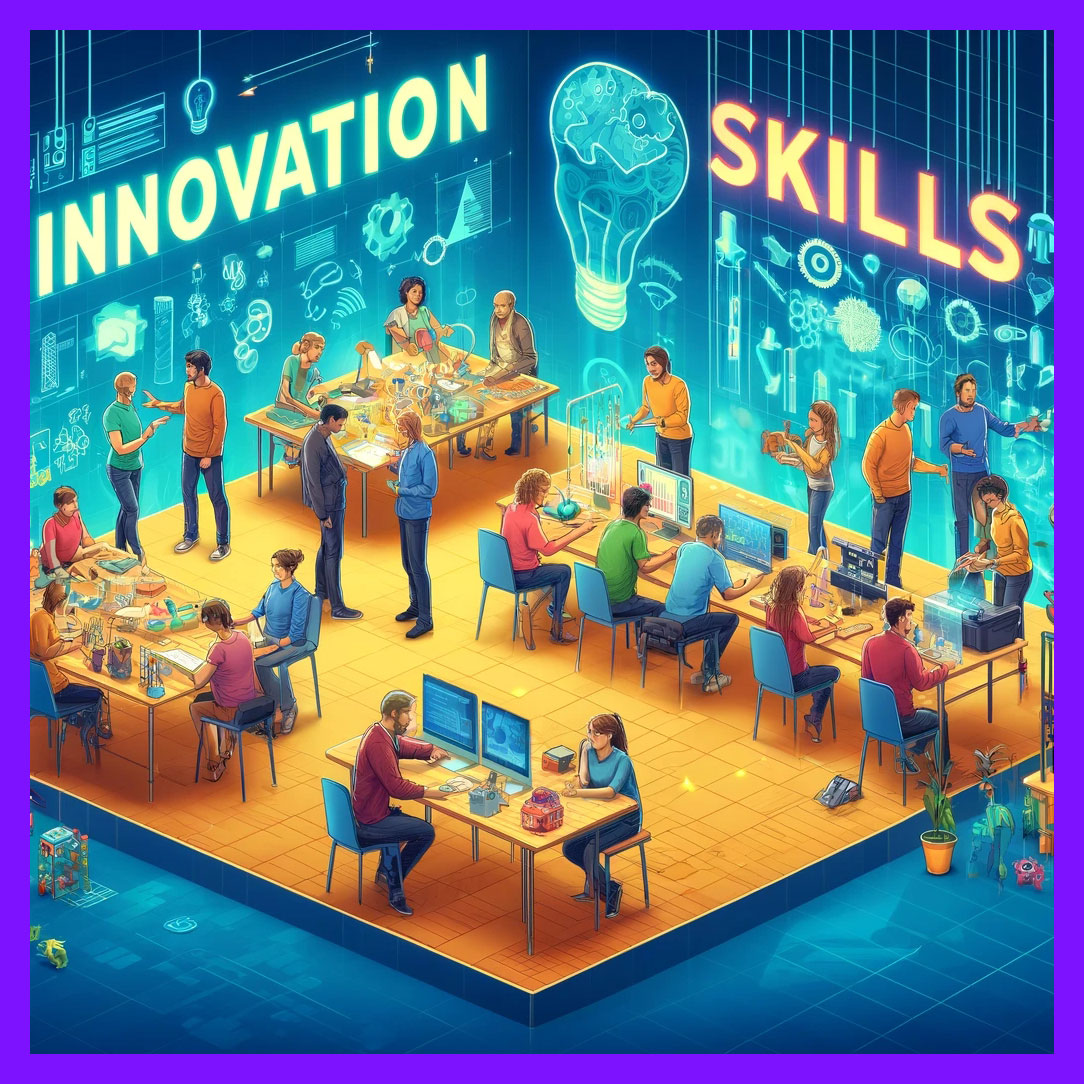
Innovation Skills
In the rapidly evolving landscape of the modern economy, innovation skills are increasingly recognized as critical for personal and organizational success. These skills enable individuals and teams to generate novel ideas, solve complex problems, and implement solutions that create value. As businesses and societies face new challenges and opportunities, cultivating these skills can be a significant differentiator.
Here's a closer look at the essential innovation skills and how they can be developed.
Core Innovation Skills
- Creative Thinking: The ability to think “outside the box” (or inside the box using inventive thinking tools) and approach problems from unique angles. Creative thinkers can connect disparate ideas to conceive novel solutions.
- How to Develop: Encourage curiosity, engage in diverse experiences, practice ideation and inventive thinking sessions, and challenge conventional thinking.
- How to Develop: Encourage curiosity, engage in diverse experiences, practice ideation and inventive thinking sessions, and challenge conventional thinking.
- Critical Thinking: The capacity to analyze problems, evaluate alternative solutions, and make decisions based on reasoned judgments. Critical thinkers can assess the viability of new ideas and identify potential pitfalls.
- How to Develop: Practice structured problem-solving techniques, engage in debate, and analyze case studies to enhance evaluative skills.
- How to Develop: Practice structured problem-solving techniques, engage in debate, and analyze case studies to enhance evaluative skills.
- Collaboration: Innovation often requires teamwork, bringing together individuals with diverse skills and perspectives. Effective collaborators can work across disciplines and leverage collective knowledge.
- How to Develop: Participate in team projects, practice active listening and empathy, and learn conflict resolution strategies.
- How to Develop: Participate in team projects, practice active listening and empathy, and learn conflict resolution strategies.
- Adaptability and Flexibility: The ability to pivot in response to feedback, changing conditions, or unforeseen obstacles is crucial for innovation. Adaptable individuals can modify their approach and explore new directions when necessary.
- How to Develop: Seek out new experiences, learn to manage uncertainty, and practice resilience in the face of challenges.
- How to Develop: Seek out new experiences, learn to manage uncertainty, and practice resilience in the face of challenges.
- Risk-taking: Innovators must be willing to take calculated risks to pursue novel ideas. This involves embracing failure as a learning opportunity and stepping outside one's comfort zone.
- How to Develop: Start with small risks to build confidence, analyze the potential outcomes of risk-taking, and reflect on past failures to glean insights.
- How to Develop: Start with small risks to build confidence, analyze the potential outcomes of risk-taking, and reflect on past failures to glean insights.
- Visionary Thinking: Seeing beyond the immediate and envisioning what could be possible in the future is a key innovation skill. Visionaries can inspire others and guide innovation efforts towards long-term goals.
- How to Develop: Engage with futuristic thinking, set ambitious goals, and immerse yourself in emerging trends and technologies.
- How to Develop: Engage with futuristic thinking, set ambitious goals, and immerse yourself in emerging trends and technologies.
- Implementation and Execution: The ability to turn ideas into action is what ultimately drives innovation. This requires project management skills, perseverance, and the practical application of ideas.
- How to Develop: Learn project management methodologies, set clear milestones, and practice disciplined execution.
- How to Develop: Learn project management methodologies, set clear milestones, and practice disciplined execution.

Fostering an Environment for Skill Development
- Continuous Learning: Encourage ongoing education and exposure to new ideas, technologies, and methodologies.
- Mentorship and Coaching: Seek guidance from experienced innovators and offer support to those looking to develop their skills.
- Innovation Challenges: Participate in hackathons, innovation contests, and other platforms that provide real-world problems to solve.
- Cross-Functional Exposure: Gain experience in different areas of the business to understand various perspectives and challenges.
Innovation skills are not innate talents but competencies that can be developed through deliberate practice and exposure to diverse challenges. By cultivating these skills, individuals and organizations can enhance their capacity to navigate the complexities of the modern world and drive meaningful change.
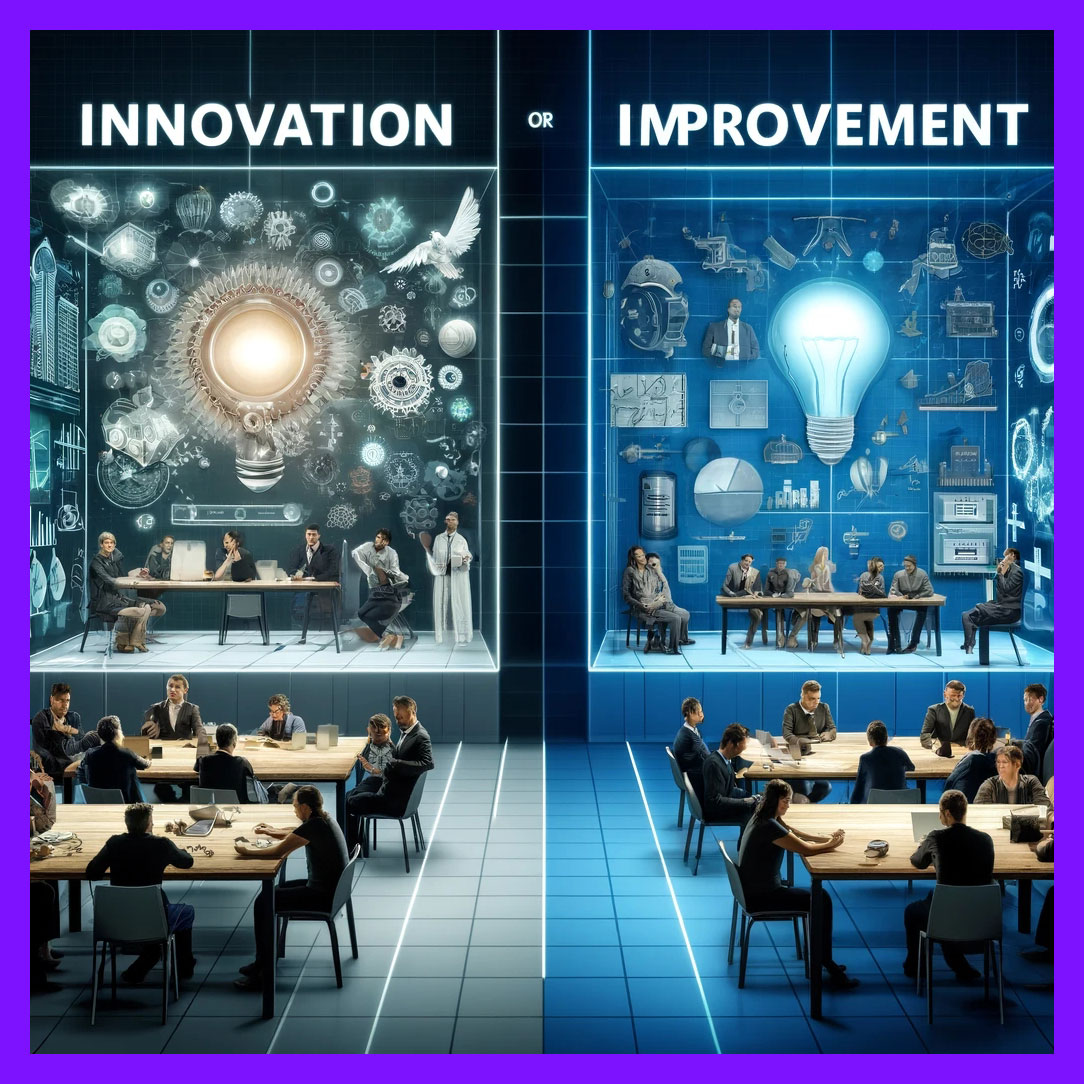
Innovation or Improvement?
The concepts of innovation and improvement are closely related but distinct, each playing a crucial role in organizational growth and competitiveness. Understanding the difference between the two can help organizations strategically allocate resources, foster a culture of continuous development, and achieve sustainable success. Here's an exploration of innovation versus improvement, highlighting their unique characteristics and complementary roles.
Innovation
Innovation involves introducing something new or significantly improved – be it a product, service, process, or business model. It's about breaking new ground and creating value in ways that have not been done before. Innovation can be incremental, radical, or disruptive, but it always involves a level of novelty and change that distinguishes it from what currently exists.
- Characteristics of Innovation:
- Novelty: Introduces new ideas or combines existing ideas in new ways.
- Disruption: Has the potential to change market dynamics or create entirely new markets.
- Risk: Carries uncertainty and a higher risk of failure due to its untested nature.
- Objective of Innovation:
- To create new value, address unmet needs, or solve problems in fundamentally different ways.
- To create new value, address unmet needs, or solve problems in fundamentally different ways.
Improvement
Improvement, on the other hand, refers to making better what already exists. It's about enhancing the performance, quality, or efficiency of products, services, or processes. Improvements are typically incremental and evolutionary, focusing on optimization and refinement rather than radical change.
- Characteristics of Improvement:
- Evolutionary: Builds on existing capabilities or processes.
- Lower Risk: Involves less uncertainty and risk since it's based on improving what's already known and tested.
- Continuous: Often part of an ongoing effort to enhance quality and efficiency.
- Objective of Improvement:
- To increase efficiency, productivity, and customer satisfaction by refining and optimizing current practices.
- To increase efficiency, productivity, and customer satisfaction by refining and optimizing current practices.
Complementary Roles
While innovation and improvement are different, they are not mutually exclusive. In fact, they complement each other within a healthy organizational ecosystem:
- Foundation for Innovation: Continuous improvement creates a solid foundation that can support innovative efforts. By optimizing current operations, organizations can free up resources and create a culture of excellence that fosters innovation.
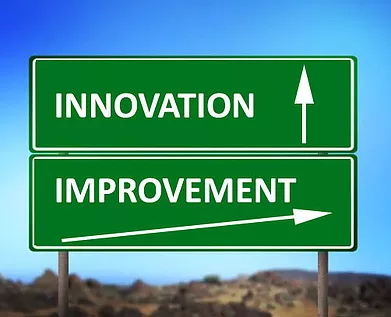 Innovation Spurs Improvement: Conversely, innovation can identify new areas for improvement. The introduction of a new technology or process often reveals opportunities to enhance existing systems or practices.
Innovation Spurs Improvement: Conversely, innovation can identify new areas for improvement. The introduction of a new technology or process often reveals opportunities to enhance existing systems or practices.- Balanced Approach: Successful organizations balance innovation and improvement. They continuously refine their current offerings while also investing in new ideas that can drive future growth.
Strategies for Balancing Innovation and Improvement
- Cultivate a Dual Mindset: Encourage a culture that values both innovation and continuous improvement. Recognize and reward contributions in both areas.
- Strategic Allocation of Resources: Dedicate resources to both improving existing operations and exploring new opportunities. This may involve setting aside specific budgets or time for innovation projects.
- Cross-functional Teams: Use cross-functional teams to bridge the gap between innovation and improvement efforts. These teams can leverage diverse perspectives to identify both innovative solutions and areas for enhancement.
- Measure and Evaluate: Develop metrics to assess the impact of both innovation and improvement initiatives. This helps in understanding their contribution to organizational goals and guiding future efforts.
In summary, innovation and improvement are two sides of the same coin, each vital for sustaining and advancing organizational success. By understanding their distinct roles and fostering an environment that supports both, organizations can navigate the challenges of today's dynamic environment and position themselves for long-term growth.
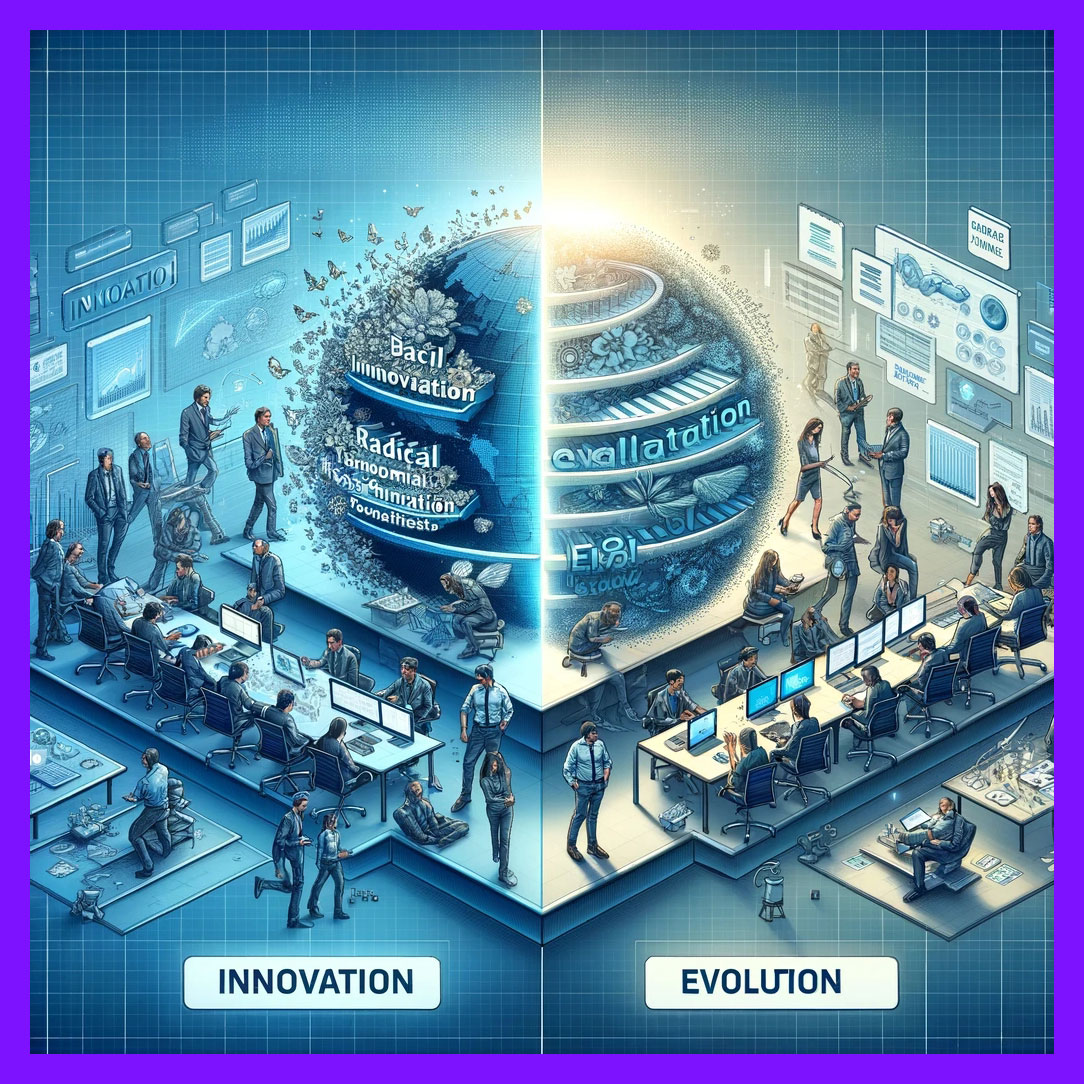
Innovation VS Evolution
The concepts of innovation and evolution are often discussed in the context of organizational growth and adaptation. While they share similarities in contributing to progress and development, they stem from different processes and dynamics. Understanding the distinction between innovation and evolution helps organizations strategize their growth paths, adapt to changes, and foster a culture that supports sustained advancement.
Innovation
Innovation is the introduction of something new or significantly improved – whether it's a product, service, process, or business model. It's characterized by deliberate efforts to break away from existing conventions or technologies to create value in novel ways. Innovation can be incremental, radical, or disruptive, but it fundamentally involves a conscious break from the past to meet emerging needs or capitalize on new opportunities.
- Key Features
- Intentionality: Innovation is often a result of targeted efforts to solve specific problems or exploit opportunities.
- Novelty: It introduces newness, either through entirely new offerings or significant improvements to existing ones.
- Discontinuity: Innovation can disrupt or alter the status quo, leading to shifts in markets, industries, or organizational practices.
Evolution
Evolution, in a business context, refers to the gradual development and adaptation of organizations over time. It's an ongoing process of change, driven by internal improvements, competitive pressures, and external environmental factors. Evolution is characterized by incremental adjustments and adaptations that organizations make in response to their changing surroundings.
- Key Features
- Gradualism: Evolutionary changes are incremental and continuous, occurring over time.
- Adaptation: It involves adjusting to external conditions and pressures, often in a reactive manner.
- Natural Progression: Evolution is a natural process of development, shaped by the interplay of various internal and external forces.
- Gradualism: Evolutionary changes are incremental and continuous, occurring over time.
Comparing Innovation and Evolution
- Driver of Change: Innovation is typically driven by a proactive desire to create new value or solve problems, while evolution is often a reactive process of adapting to external pressures and opportunities.
- Speed and Nature of Change: Innovation can bring about rapid and radical changes, whereas evolution implies a slower, more incremental process of adaptation.
- Outcome: While both innovation and evolution aim to ensure the organization's growth and survival, innovation seeks to change the competitive landscape or create new paradigms, whereas evolution is about adapting and thriving within the existing paradigms.
Strategic Implications
Organizations need both innovation and evolution to navigate the complexities of the modern business environment. Innovation allows for breakthroughs and the creation of new markets or segments, while evolution ensures that the organization remains competitive and responsive to gradual changes in the market and industry.
- Balancing Act: Successful organizations balance the need for immediate evolutionary adaptations with the pursuit of longer-term innovative breakthroughs.
- Fostering a Dual Approach: Encouraging a culture that values both innovative thinking and continuous improvement can help organizations remain resilient and adaptable.
- Strategic Planning: Incorporating both innovation and evolutionary strategies into planning processes ensures that organizations can respond to immediate challenges while also investing in future growth.
In summary, innovation and evolution represent two complementary approaches to organizational development. By understanding and leveraging both, organizations can ensure their sustained relevance, competitiveness, and growth in an ever-changing world.
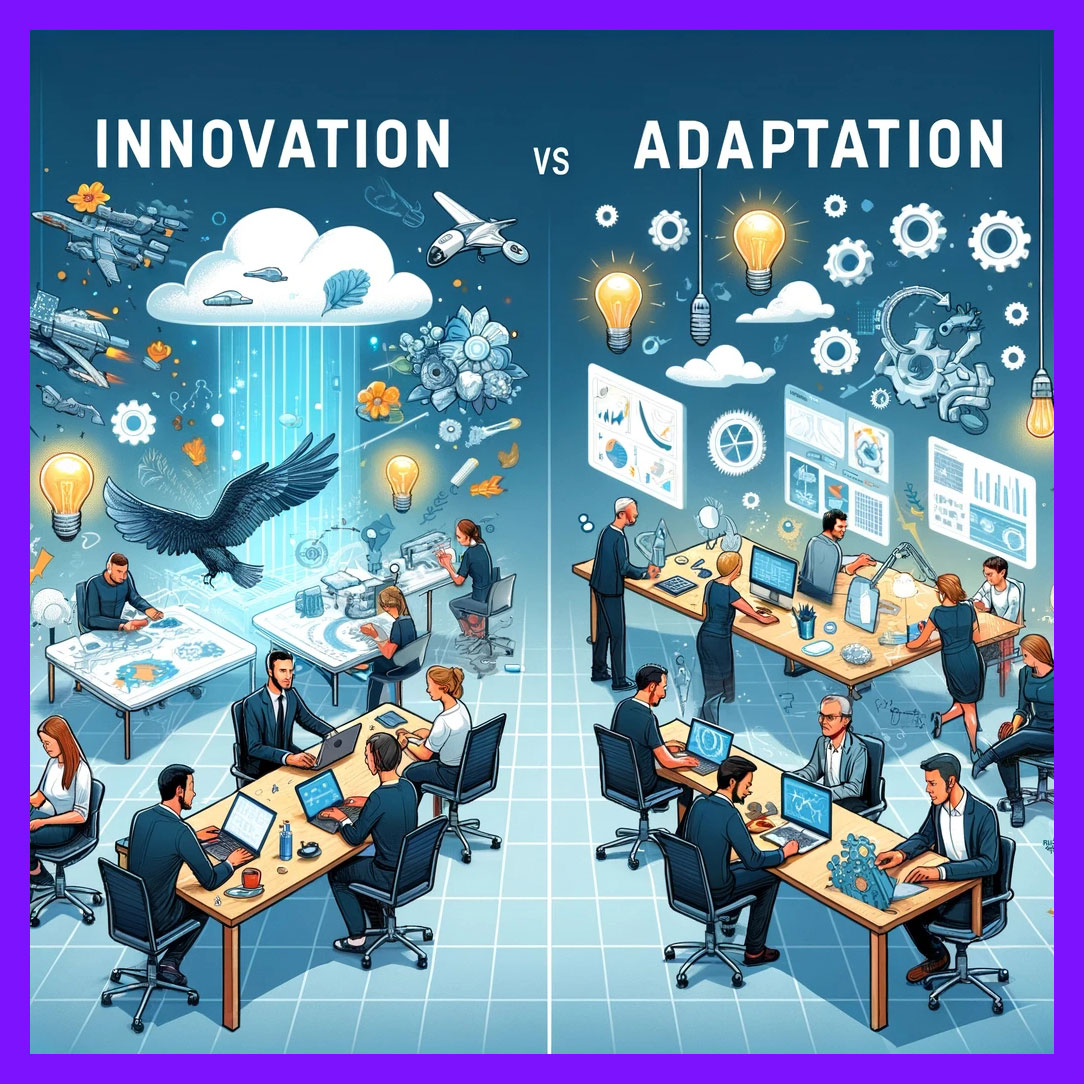
Innovation VS Adaptation
In the dynamic landscape of business and technology, both innovation and adaptation play critical roles in an organization's survival and growth. While they are interrelated and sometimes overlap, understanding their distinctions is crucial for strategic planning and fostering a culture that supports long-term success. Here's an exploration of the differences between innovation and adaptation, and how they contribute to organizational resilience and competitiveness.
Innovation
Innovation involves creating new products, services, processes, or business models that deliver value in ways that have not been seen before. It's about breaking new ground and introducing changes that make a significant difference, either by improving efficiency, creating new markets, or providing solutions to unmet needs.
- Key Features:
- Novelty: Innovation introduces something new or significantly improved to the market or organization.
- Disruption: It has the potential to disrupt existing markets or create entirely new ones.
- Proactivity: Innovation is often driven by a proactive approach to seizing opportunities or addressing challenges in novel ways.
Adaptation
Adaptation refers to the process of adjusting or modifying existing products, services, processes, or strategies in response to changing conditions or challenges. It's about ensuring survival and maintaining relevance in a shifting environment by evolving in response to external pressures.
- Key Features:
- Responsiveness: Adaptation is characterized by a reactive approach, where changes are made in response to external forces, such as market dynamics, technological advancements, or regulatory changes.
- Evolutionary: The changes are typically incremental, focusing on making existing offerings more suitable for the current environment.
- Survival: The primary goal of adaptation is to ensure that the organization continues to operate effectively in the face of new challenges or opportunities.
Comparing Innovation and Adaptation
- Objective: Innovation aims to create new value through breakthroughs or significant improvements, while adaptation seeks to modify or evolve existing elements to better fit the changing environment.
- Approach: Innovation is more about introducing change that leads, whereas adaptation is about following or responding to change.
- Impact: Innovative efforts can lead to transformative changes that redefine markets or industries, whereas adaptive changes often enhance competitiveness or efficiency within the existing framework.
Strategic Implications
For organizations to thrive, they must effectively balance innovation with adaptation. Innovation allows for growth and the exploration of new opportunities, while adaptation ensures resilience and the ability to navigate through immediate challenges.
- Cultivating a Dual Capability: Organizations should strive to cultivate capabilities in both innovation and adaptation. This dual focus enables them to not only respond to immediate changes but also to shape the future of their industry.
- Encouraging a Culture of Learning: A culture that values learning, experimentation, and flexibility supports both innovation and adaptation. Encouraging cross-functional teams and diverse thinking can spark innovative ideas and adaptive strategies.
- Strategic Flexibility: Maintaining strategic flexibility allows organizations to pivot between innovation and adaptation as circumstances require. This involves being open to change, continuously scanning the environment for signals of change, and being prepared to reallocate resources swiftly.
In summary, innovation and adaptation are complementary strategies that organizations need to employ to ensure their long-term success and sustainability. While innovation focuses on creating new value through significant changes, adaptation is about evolving in response to the environment to maintain relevance and competitiveness. Balancing these approaches allows organizations to lead in their industries and navigate the complexities of an ever-changing world.
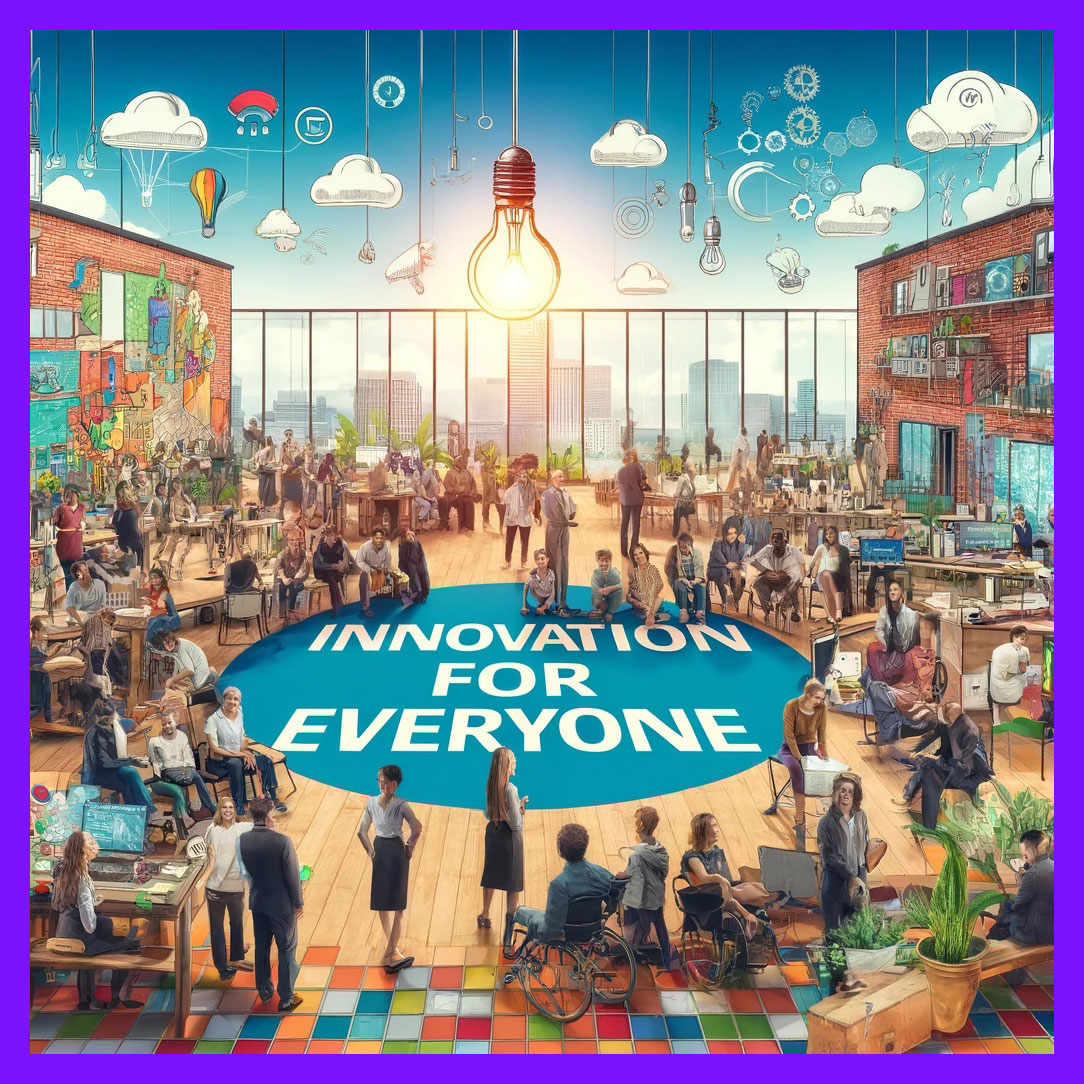
Innovation for Everyone
The democratization of innovation is a transformative concept that suggests innovation should be accessible to all layers of an organization and society, not confined to specific sectors, departments, or elite groups. This approach fosters a culture where everyone is empowered to contribute ideas and solutions, leading to a more dynamic, inclusive, and sustainable innovation ecosystem.
Here’s how innovation can be made accessible to everyone and the benefits of such an approach.
Key Principles of Making Innovation Accessible
- Fostering an Inclusive Culture: Cultivate an environment where every individual feels valued and empowered to share their ideas, regardless of their role or background. This involves breaking down hierarchical barriers and encouraging open communication.
- Providing Tools and Resources: Equip people with the tools, resources, and training they need to innovate. This includes access to technology, educational materials, and platforms where ideas can be shared and developed.
- Encouraging Collaboration: Promote cross-functional teams and partnerships that bring together diverse perspectives. Collaboration across different disciplines can spark creativity and lead to more comprehensive and innovative solutions.
- Implementing Supportive Policies: Develop policies that support innovation at all levels, including time for exploration, mechanisms for idea submission and evaluation, and rewards for successful innovations.
- Leveraging Technology: Utilize digital platforms and social media to crowdsource ideas and solutions from a wider audience, including customers, partners, and the broader community.

Benefits of Innovation for Everyone
- Diverse Perspectives Lead to Better Solutions: Involving a broad range of voices in the innovation process brings in diverse perspectives, which can lead to more creative, effective, and inclusive solutions.
- Increased Engagement and Ownership: When individuals feel they can contribute to innovation, they are more engaged and take greater ownership of outcomes, leading to higher motivation and job satisfaction.
- Faster Problem-Solving: A decentralized approach to innovation can accelerate problem-solving and the implementation of solutions, as ideas are generated and tested by those closest to the challenges.
- Greater Resilience and Adaptability: Organizations that distribute innovation capabilities across their ecosystem are more resilient and adaptable to changes, as they can draw upon a wider pool of ideas and solutions.
- Driving Social and Economic Inclusion: Making innovation accessible to everyone can help address social challenges by involving underrepresented groups in creating solutions that meet their needs, driving social and economic inclusion.
Implementing Innovation for Everyone
- Challenge Traditional Mindsets: Shift away from the notion that innovation is the sole domain of R&D departments or top management. Encourage everyone to see themselves as innovators.
- Create Platforms for Sharing: Develop internal platforms where employees at all levels can submit ideas, collaborate on projects, and provide feedback.
- Educate and Empower: Offer training and resources that demystify the innovation process and equip individuals with the skills and thinking tools to participate effectively.
- Recognize and Reward Contributions: Establish mechanisms to acknowledge and reward contributions to the innovation process, reinforcing the value placed on diverse ideas.
Innovation for everyone challenges the traditional confines of creativity and problem-solving, advocating for a more inclusive, participatory approach. By embracing this philosophy, organizations and societies can unlock a wealth of untapped potential, driving progress and innovation in an ever-evolving world.
Systematic Innovation
Interested in getting help with systematic innovation processes and developing new products and services?
Contact us: [email protected] ,+972-9-958-5085
Innovation Articles
- Innovation - overview
- Innovation management and process
- Innovation tools and methods
- Innovation and other disciplines
- Innovation in organizations
- Innovation importance and goals
- Innovation values and inspiration
- Innovation education and career
- Product and service innovation
- Technological innovation
- Innovation examples
- Innovation terms (glossary)





